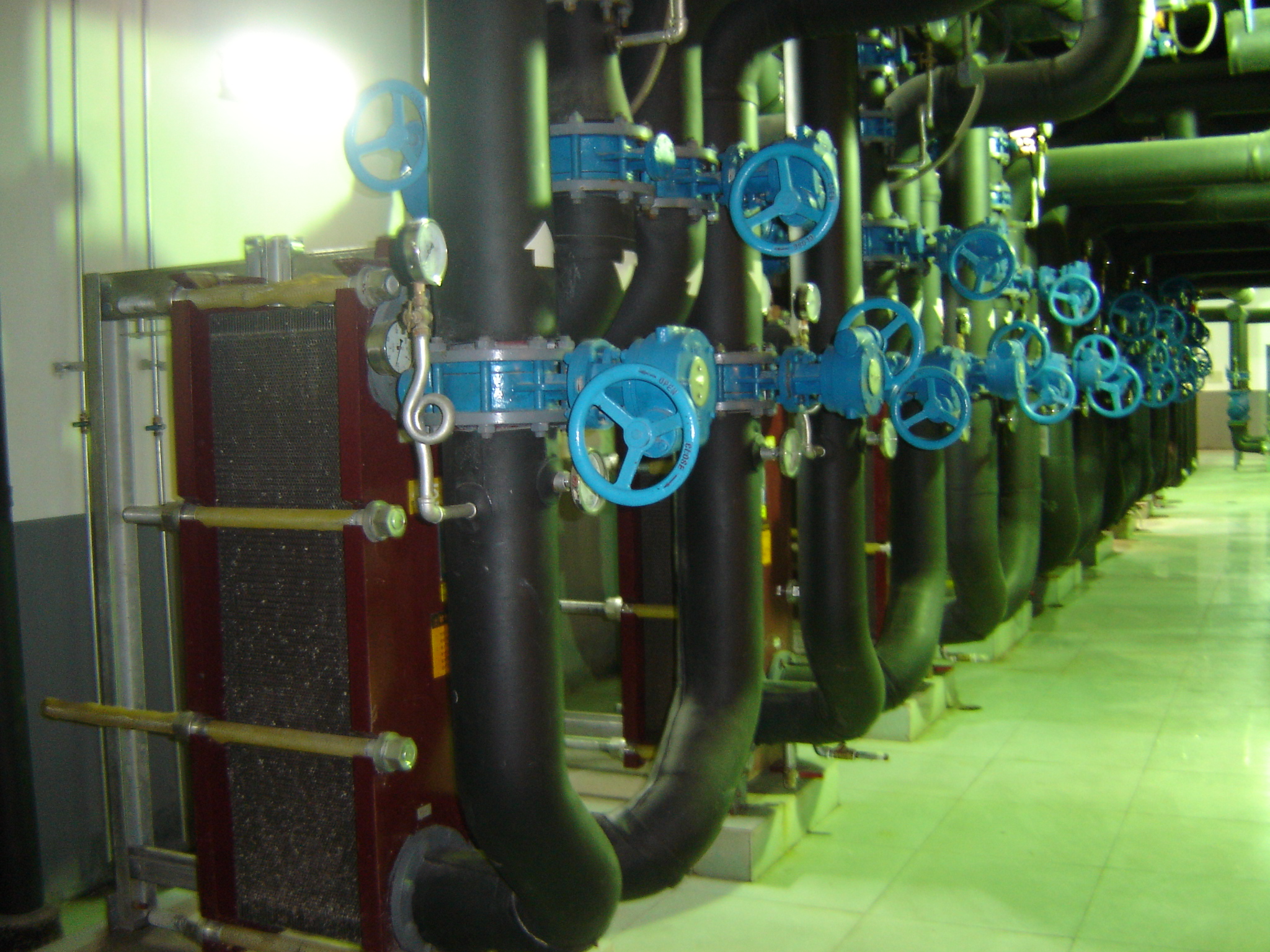
The heating systems in Beijing's Beiyuan Home Residential Community use three heat pumps from ground source geothermal wells as their main source for heating and water. In order to maximize geothermal resources, ground source heat pumps have been applied to develop and fully utilize energy transfer. Ground source heat pumps systems extract heat energy from the ground or groundwater and offer exceptionally high levels of efficiency, achieving significant reductions in CO2 emissions and energy bills. Auxiliary heating can also be used during peak times and during system maintenance downtimes to provide an efficient and balanced energy provision.
A plate type heat exchanger was used to efficiently transfer the thermal energy in the geothermal water to circulate around the building for everyday use in the homes. The plate heat exchanger can also make the most of the geothermal energy transfer to reduce the temperature of the water when recycled so as to provide cooling in the summer. An auxiliary function on the heat exchanger can be enabled (either for redundancy or peak use) to make sure other traditional heating systems kick in when necessary so the system can cope with all scenarios and work normally at all times. This "hybrid" approach to using traditional and geothermal resources provides sound economic benefits and savings on electrical energy and helps the environment. The system uses fluctuation control, atmospheric temperature compensation, and seasonal adjustments to vary and compensate for changes in geothermal and atmospheric changes. The capacity and expansion of the heating network, electrical load, equipment load, water supply load as well as computer system load all need to be taken into consideration when the system was designed so as to meet the long-term needs of the community.
The project was divided into three parts: The auxiliary annex area, high floor heating and water supply, as well as low floor heating and water supply. The heating of the auxiliary annex, high floor and low floor areas were implemented in a serial-parallel configuration which builds in redundancy and reliability. The heating water flows through a five plate heat exchange device, and the pressurized water in one bypass is used for general purpose residential water supply. Low floor heating supply is divided into three-level heat plate exchanges. When the geothermal energy supply can't meet the demand, the traditional heating system will be started to carry on the heat exchange. The boiler room auxiliary heating system is located the near the residents for efficient peak use. This system makes the best use of geothermal resources, consumes less water and achieves a balance between heating system types to deliver long-term reliability and sustainability.
The automatic adaptive heat exchange system for multiple heating requires a flexible controller and carefully designed software. The system needed to take into consideration compatibility between control equipment and communication methods as well as user requirements.
The system uses Advantech ADAM-5000 series products. Eight ADAM-5510M controllers are used in the main station for system control, while each of them (as a main station) will have 1~3 ADAM-5000E as its substation for acquisition control. Two Advantech industrial computers form two connected work stations to carry out real-time acquisition, control and regulation. One of them serve as the work station for I/O monitoring, while the other one serves as the work station for processing and analyzing data. In order to ensure data accuracy, the converter which controls the submersible pump and the recharge pump, and performs remote monitoring, regulation, alarm and other functions in the geothermal well, uses Modbus communication protocol via a converter communication card. Bus-based network connections have been used between the monitoring work station, data analyzing work station, ADAM-5510M (main station for automatic acquisition control), ADAM-5000E substation, and converter substation, so each station will not affect the running of other stations. This means each station works independently and the failure on upper stations will not affect the automatic running of the lower stations. And, the Human Machine Interface (HMI) system is compatible with that of other on-site equipment, making it easy to operate.
The heating system in Beijing's Beiyuan Home Residential Community employs several Advantech 5000 series controllers as main stations and substations and two industrial PCs to realize local and remote monitoring, centralized management and distributed control of the whole system. The system is reliable, stable and economically efficient. In all, the system offers tremendous benefits in energy savings and represents a new breed of intelligent green energy application.
|






